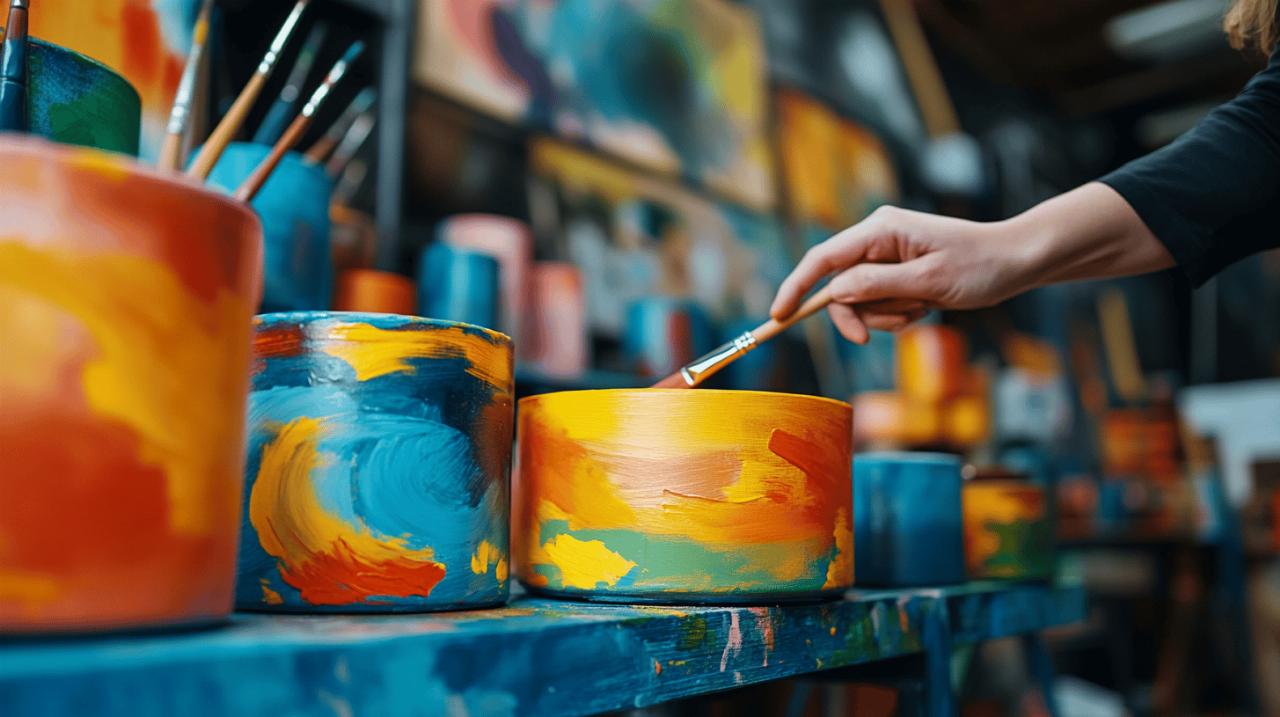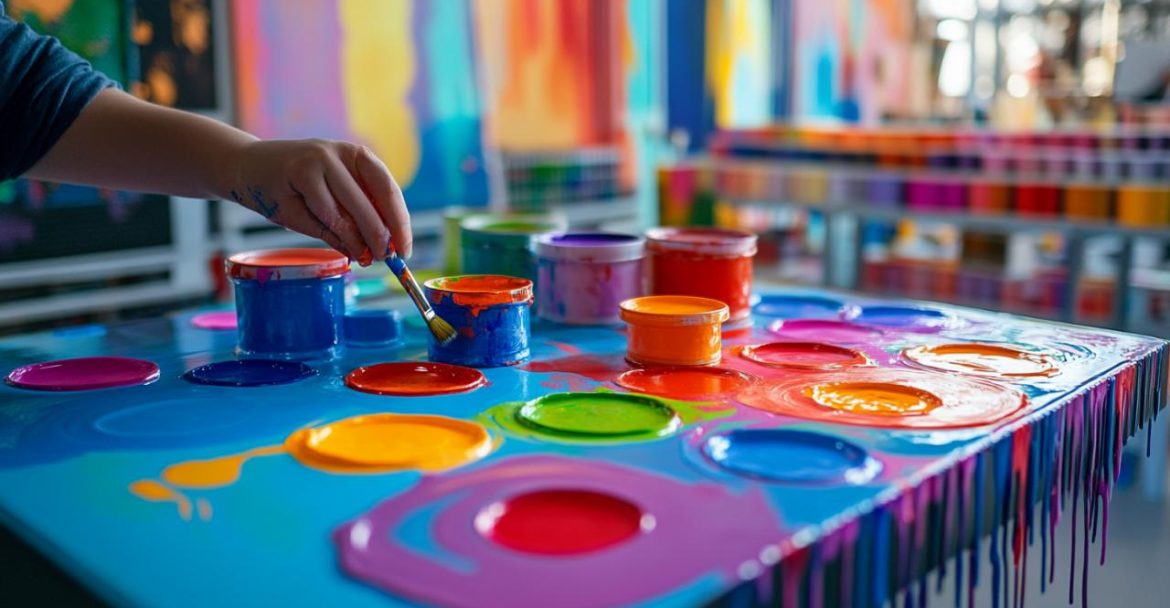Transforming your PVC furniture with a fresh coat of paint can breathe new life into tired pieces while being significantly more cost-effective than replacement. Whether you’re looking to update uPVC doors, window frames, or outdoor furniture, selecting the right paint is crucial for achieving a professional-looking, durable finish. In the UK, where our variable weather conditions place additional demands on exterior surfaces, this becomes even more important. Let’s explore how to select and apply the perfect PVC paint for your next home improvement project.
Understanding pvc paint types and formulations
When embarking on a PVC furniture transformation project, it’s essential to choose paints specifically formulated for this unique material. The UK home maintenance market offers several specialized options that provide excellent adhesion to these notoriously slick surfaces. Many homeowners have found success with self-priming paints like Frenchic’s Al Fresco range, which eliminates the need for separate primer application while offering robust weatherproof qualities. For additional inspiration and expert advice on home decor, complementosdedecoracion.es features comprehensive guides on various interior design aspects, including material selection for furniture renovation.
Specialty pvc paints vs standard paint options
Standard paints typically struggle to adhere properly to PVC surfaces, leading to peeling, cracking, and disappointment. Specialty PVC paints contain binding agents and adhesion promoters specifically designed to create a strong bond with this synthetic material. These formulations also commonly feature UV resistance to prevent discolouration, a particularly important consideration for white uPVC that tends to yellow or grey over time. Water-resistance is another critical factor, especially for outdoor applications where British weather conditions can quickly deteriorate inferior paint jobs.
Key Ingredients to Look for in Quality PVC Paint
When examining paint options for your PVC furniture transformation, look for products that specify self-priming, self-sealing, and self-levelling properties. These features streamline the application process while ensuring professional results. The best PVC paints will explicitly state their suitability for plastic surfaces and offer UV protection to maintain colour integrity even in direct sunlight. For exterior applications, check that the paint can withstand temperatures between 10-32°C for at least 48 hours after application, as this helps ensure proper curing and adhesion in typical UK conditions. 
Surface preparation techniques for pvc furniture
Proper preparation is perhaps the most crucial step in achieving a successful PVC paint job. Even the most expensive, high-quality paint will fail if applied to a poorly prepared surface. Taking the time to thoroughly clean and prepare your PVC furniture will significantly improve paint adhesion and extend the lifespan of your finished project.
Cleaning Methods to Remove Dirt and Residue
Begin by thoroughly cleaning the PVC surface with sugar soap solution, mixing approximately one part sugar soap to ten parts warm water. This cleaning agent is particularly effective at removing greasy residues that would otherwise interfere with paint adhesion. Apply the solution with a sponge, working methodically across the entire surface. After cleaning, rinse the furniture thoroughly with clean water and allow it to dry completely. This step is vital for removing manufacturing residues, environmental pollutants, and oils that naturally transfer from hands during normal use.
Sanding approaches for maximum paint adhesion
Once your PVC furniture is clean and dry, light sanding is necessary to create a textured surface that gives the paint something to grip onto. Use fine-grit sandpaper and work with gentle, even pressure across all areas to be painted. The goal is not to remove material but rather to create microscopic scratches that increase the surface area and provide mechanical adhesion points for the paint. After sanding, wipe away all dust with a damp cloth and allow the surface to dry once more before proceeding with primer or paint application.
The importance of priming pvc surfaces
While some modern PVC paints advertise self-priming capabilities, applying a dedicated primer can still enhance your results, particularly for outdoor furniture or items subject to heavy use. A quality primer creates an intermediate layer that bonds securely to both the PVC substrate and the topcoat, significantly improving durability and finish quality.
Selecting the Right PVC Primer for Your Project
When choosing a primer for PVC surfaces, look for products specifically formulated for plastic or synthetic materials. These specialised primers contain adhesion promoters that form strong molecular bonds with PVC. For outdoor applications, ensure the primer offers moisture resistance and UV protection to prevent premature degradation. Many UK DIY enthusiasts find that bonding primers designed for difficult surfaces work exceptionally well, creating a tacky base that topcoats can firmly adhere to. Consider the finish colour as well, as white or tinted primers can help achieve true colour representation with fewer coats of paint.
Application techniques for even primer coverage
Apply primer using thin, even coats rather than a single thick application. This approach minimises drips and ensures consistent coverage across the entire surface. Allow each coat to dry completely according to the manufacturer’s instructions before proceeding. For intricate PVC furniture with detailed mouldings or hard-to-reach areas, consider using a small artist’s brush to ensure complete coverage in crevices and joints. Proper primer application sets the foundation for your entire project, so patience during this stage will be rewarded with superior final results.
Effective paint application methods
After preparing and priming your PVC surface, the actual paint application requires equal attention to detail. The method you choose significantly impacts the final appearance and durability of your project. Whether using brushes or spray equipment, proper technique ensures a professional-looking transformation of your PVC furniture.
Brush vs Spray Techniques for Different PVC Items
For smaller PVC items or those with intricate details, brush application often provides the best control and coverage. Select a high-quality synthetic brush with soft bristles that won’t leave visible stroke marks. Apply paint in the direction of any existing grain or panelling on the furniture. For larger flat surfaces like uPVC doors, spray application can deliver a smoother, more uniform finish. When spraying, maintain approximately 4 inches distance from the surface and use continuous movements to prevent paint buildup that could lead to drips or runs. Regardless of method, always work in a well-ventilated area and protect surrounding surfaces with drop cloths and masking tape.
Layering strategies for professional-looking results
Multiple thin coats consistently outperform single thick applications when painting PVC furniture. Begin with an extremely light first coat that might appear somewhat translucent, then allow proper drying time according to the manufacturer’s guidelines, typically around two hours between coats. This patience prevents trapping moisture beneath the surface, which could lead to bubbling or peeling. For most projects, three to four thin coats achieve optimal coverage and durability. Allow the final coat to cure completely, often 24-48 hours, before handling the furniture or reattaching any hardware removed during preparation.
Finishing and protecting your painted pvc
The final step in transforming your PVC furniture involves protecting your newly painted surface to ensure longevity and durability. While some specially formulated PVC paints like the Al Fresco range are self-sealing, additional protection can be beneficial, particularly for high-traffic items or outdoor furniture exposed to British weather conditions.
Sealant Options for Indoor vs Outdoor Furniture
For indoor PVC furniture, a water-based polyurethane sealer provides excellent protection against daily wear without yellowing over time. Apply using a foam applicator for the smoothest finish, allowing full curing before regular use. Outdoor PVC items require more robust protection against UV rays and moisture. Marine-grade sealants offer superior weatherproofing and often contain UV inhibitors to prevent colour fading. For maximum protection in the variable UK climate, consider applying two thin coats of sealant to outdoor furniture, with particular attention to edges and joints where moisture might penetrate.
Maintenance Tips to Extend the Life of Your Painted PVC
To maintain your beautifully transformed PVC furniture, establish a regular cleaning routine using mild soap and water, avoiding harsh chemicals that might degrade the paint surface. Inspect outdoor pieces seasonally for any signs of wear or damage, addressing small chips or scratches promptly before moisture can penetrate beneath the paint layer. During winter months, consider storing outdoor PVC furniture in a garden shed or covering it with breathable furniture covers to prevent unnecessary exposure to harsh elements. With proper care, your painted PVC furniture can maintain its refreshed appearance for many years, providing excellent value compared to replacement costs.

